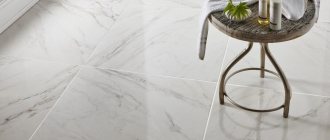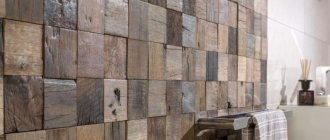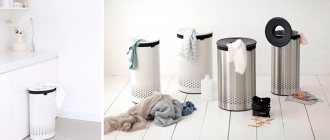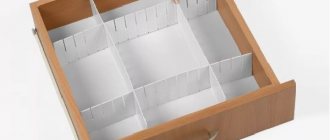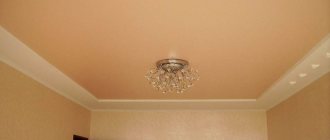Sanitary standards for the installation height of bathtub faucets
As for sanitary standards, they are unambiguous and laconic in domestic standards and related documents. In domestic premises, for example, in apartments or houses, bathroom faucets are installed at a height of 850 mm from the finished floor above the sink, bathtub or shower, making adjustments in accordance with the following rule. The faucet should be no lower than 250 mm from the edge of the bathtub or sink. In the case when a mixer with a movable gander is installed immediately above two containers, then the largest limiter is chosen, namely: a sink, the level of the edge of which is always an order of magnitude higher than that of the bathtub, even if the latter is mounted on a hill.
If the bathroom is located in medical institutions, in particular hospitals and sanatoriums, the standards change somewhat and the installation height of the mixer should be greater, namely 1100 mm.
If the mixer is installed not above the bathtub, but, for example, in the shower, then in this case the height should be at least 1200 mm above the level of the edge of the product, more precisely, the shower tray. This rule applies both in domestic conditions and in specialized medical conditions.
Such standards are included in document SNiP 3.05.01-85. They differ somewhat from European standards, where the values fluctuate by about 50 mm upward for each indicator. It is also worth taking into account the year of creation of this regulatory document, namely 1985. Since then, many changes have appeared, and in this case it is worth focusing more on European standards, which are considered modern. But we must not forget about the newer document SP 73.13330.2012, in which these installation standards are duplicated.
Dimensions of ceiling shower heads
The variety of sizes of shower heads presented in plumbing showrooms makes it possible to choose the perfect one for each bathroom. When choosing a shower panel, you should take into account the aesthetic preferences of the owners, the technological parameters of installation and water supply, the functional characteristics of the product and the stylistic orientation of the bathroom interior. Before you go shopping, you should consult with experts about the possibility of various types of installation in your premises.
Photo from the site https://panorama.tomsk.ru/
The overhead shower panels are divided by size into:
- Large size - from 600 mm, the most expensive elite models, which allow you to completely envelop a person in streams of water and give the feeling of rain streams;
- Medium size - from 350 to 600 mm are the most common, representing a compromise between dimensions sufficient for relaxation and wide installation possibilities;
- Compact - from 200 to 350 mm have the advantages of affordable cost and light weight, allowing the use of a wider range of adjustment possibilities.
Smaller watering cans have not become widespread in shower sets with overhead showers and have remained the prerogative of mobile hand-held models, due to the directionality and limited area of water supply.
It would be a mistake to choose the size of a product based only on the aesthetic preferences of the owners, because in addition to harmony in the interior, the size of the watering can also determines the number of nozzles and the flow capacity of the shower. With a jet quality sufficient for comfort, attractive large models consume up to 60 liters per minute, requiring the installation of high-throughput mixers to ensure sufficient water supply.
The capabilities of instantaneous water heaters do not allow them to provide a sufficient amount of water for the impressive size of shower heads, so for apartments with this type of hot water supply it is better to give preference to medium or compact sizes of overhead shower.
Installing a faucet in the bathroom, taking into account the individual needs of apartment residents
If in hotels, hospitals and other public places where the presence of bathrooms (showers) is implied, the standards are always unambiguous, then in everyday conditions they can be treated more loyally. This approach allows you to make life more comfortable and adapted to the needs of the user.
For example, for anatomical features. This is especially true for those people for whom comfort is vital, and specifically: people with disabilities. For them, the position, height and placement of faucets above the bathtub and sink can be selected individually, taking into account the anatomical characteristics of the body. Thus, they can introduce correction factors into planned calculations for installing plumbing fixtures.
However, not only people with health problems require special placement of the mixer. Many people experience inconvenience when using a mixer due to their small or, conversely, rather tall stature. Therefore, the installation height can also be adjusted up or down in this case.
Basic types and subtleties of installation
Before hanging a heated towel rail in the bathroom, you need to decide on the square footage and height of the room. This device is usually designed for 5-6 m² of usable area. The installation height of the heated towel rail is determined based on building codes and design solutions.
There are several types of heated towel rails:
- Made from stainless steel. This type is highly reliable and durable.
- Brass coils with chrome plated. The durability of the coating depends on the quality of the product.
The shape of radiators can be in the form of a coil, a ladder or another shape. Experts advise choosing a device with a minimum number of joints, seams and jumpers.
For normal operation of the device, it is necessary to correctly connect the device to the system. The device must be installed in accordance with the specifications.
When installing the radiator, the following rules must be observed:
- before hanging a heated towel rail in the bathroom, decide on the piping diagram for the apartment or private house;
- use only seamless pipes (d=35 mm) for piping, which will protect against possible leaks;
- the distance from the edge of the wall plane in the bathroom to the central axis of the pipe should be 35-55 mm;
- To mount plumbing products, use only factory-made brackets, which must be included in the delivery package;
- connection to the main line must be made using threaded couplings;
- the nominal diameter of the main line must coincide with the nominal diameter of the pipes of the device (SNIP requirements);
- The direction of movement of the coolant is usually from top to bottom, but there are exceptions.
It must be remembered that the installation of the device in an apartment building must be carried out in accordance with the project.
After installation, hydraulic tests of the circuit are carried out, followed by an external inspection for possible leaks.
Determining the installation height of a faucet for a sink, bathtub, hygienic shower
The installation locations of mixers must be determined in advance at the stage of creating a water supply project for the premises. However, a number of details are taken into account, in addition to ergonomic properties, namely, what kind of plumbing fixtures will be used and what are its functional features.
Installation on the sink and above the sink
For example, on a sink in which a mounting hole is provided for the faucet outlet, the connection is made using flexible hoses. The exit to them should be hidden under a cabinet or other decorative element in order to maintain the integrity of the perception of space. In this case, when the height of the cabinet or mount is from 650 to 850 mm, it is placed slightly lower. In this case, the distance between the mixer and the outlet should be no more than the length of the flexible connecting hose that comes with the mixer.
If the mixer is installed on the wall above the sink, you should follow the rules given above, i.e. no lower than 250 mm above the level of the edge of the sink according to Russian requirements, and no lower than 300 mm according to European requirements. But even in this case, it is necessary to hide the pipes.
Faucet height above bath
As for the height at which the faucet is installed above the bathtub, this parameter is determined in a similar way. In this case, the distance from the floor level to the mixer must be at least 850 mm. This norm is taken on the basis that it will be used by the average adult. It is designed taking into account the ergonomics of its use by a person of average height and build. If the user goes beyond such limits, then the norm can be adjusted up or down, provided that the mixer is installed in a private house or apartment, and not in a hotel or other public place.
Installation on the side of the bath
It is quite rare to install faucets on the side of the bathtub, but this is also practiced. In this case, a special hole made in the factory is provided in the bathroom. In this case, the connection to the mixer is made in the same way as for a sink with a mounting hole: in a hidden way using flexible hoses.
Shapes of shower panels with overhead shower and mixer tap
It is good practice among bathroom equipment manufacturers to involve world-famous designers in creating conceptual solutions for their products. The flight of fantasy and creative thinking of Philippe Starck, Giorgio Armani, Roberto Lazzeroni create a haute couture atmosphere in the bathroom, resulting in strict lines or fancy outlines of shower stands and shower heads.
Laconic straight forms are successfully used in interiors designed in high-tech, loft or minimalist styles. They harmoniously complement bathrooms decorated with constructivism or techno.
Photo from the site https://www.btmarket.com.ua
Familiar to the eye, traditional round shower heads are indispensable in classic interiors and are widely used in Renaissance, Baroque and Empire style bathrooms. However, a certain neutrality and versatility of this form allows it to fit into any stylistic solution.
Photo from the site https://www.o-vannoy.ru
The whimsical, multifaceted shapes chosen for the shower head will not allow it to become an inconspicuous functional accessory. Attracting the eye from the threshold, it becomes the central element of a bathroom decorated in an eclectic, gothic or kitsch style.
Photo from the site https://www.shop-hansgrohe.ru
What is a mixer and what is it for?
A mixer is one of the most important plumbing devices that regulates water temperature and its supply power. In the shower, it can also direct the flow of water in the desired direction. When choosing a device, you must decide in advance on the model and installation location.
Varieties:
- Herringbone-type structures are a pair of crane boxes housed in a single housing. Such models are available with ceramic discs or rubber gaskets. The pressure of the jet and its temperature can be controlled by turning the valves. This is the standard for domestic mixers; they were installed before the introduction of lever devices. The design is quite simple, even primitive, and has its drawbacks, however, their cost is very economical.
- Single lever is a relatively new invention. Such a device is formed by two polymer spheres. The distance between them is adjusted by moving the lever. Installing it is not difficult; the service life of such a device is several times longer than the period of use of a herringbone mixer. Leaks and other malfunctions occur less frequently. Cartridge wear can lead to rapid breakdown of the model. This can be avoided if you choose the device more carefully. As a rule, cheap devices are of low quality. The cartridges here are made from unreliable and wear-resistant materials.
- Among the most expensive models are thermostatic devices that allow you to once adjust the temperature and water supply power, record these values and use them later by default. Such models can be purchased complete with expensive luxury plumbing fixtures. The somewhat inflated price is fully justified by the comfort experienced during long-term uninterrupted operation.
We invite you to familiarize yourself with filters for water purification for boilers
Among the materials from which shower faucets are most often made, brass has proven itself to be the best. Products made from it are strong, durable, and not subject to early wear. Other materials are also applicable.
Shower cabins
They appeared on the market relatively recently, compared to conventional baths. They save water well and take up little space, making them popular among people with small bathrooms.
Shower cabins come in two types:
- Prefabricated. Separate elements are used to assemble such models.
- Monoblocks. In this case, all the elements are already adjusted and connected to each other. This design is very easy to install.
A shower tray is required for a shower cabin, but if one is missing, a specially prepared floor can perfectly replace it.
Which kitchen faucet is better to choose?
When choosing a mixing device for your kitchen sink, you need to consider factors such as:
- the size of the sink itself;
- gander height;
- number of levers;
- the presence of a rotation function;
- ease of installation and repair of the product;
- the intended installation location is the side of the sink or a wall;
- appearance.
If the sink has two compartments, then it is reasonable to install the device in the middle so that the spout reaches the middle of each bowl. Or purchase a faucet with a pull-out shower head. This is convenient, especially when you need to pour water into a container standing on the hob or cutting table.
The height of the spout should be such that it is possible to place a tall pan or other household container under the tap. At the same time, with a high gander and a shallow sink bowl, there is a risk of water splashing if you create a high pressure.
The number of levers does not play a big role in the functionality of the device. Whichever is more convenient for you. But there is no doubt that one-armed devices are increasingly finding their admirers.
The angle of rotation of the spout also plays an important role when choosing a device. The larger it is, the easier it will be for the housewife to wash dishes and perform other actions.
Also, when installing a faucet in the kitchen, it is useful not to forget about the drinking filter. If you decide to install a flow-through sorption filter (See the detailed article about installing such a filter), then in addition to the main mixer, you will also have a drinking water tap attached to the kitchen sink. All this needs to be planned in advance, of course.
And the last thing that can be said about the choice of kitchen faucets is that they should fit into the overall interior style of this room.
